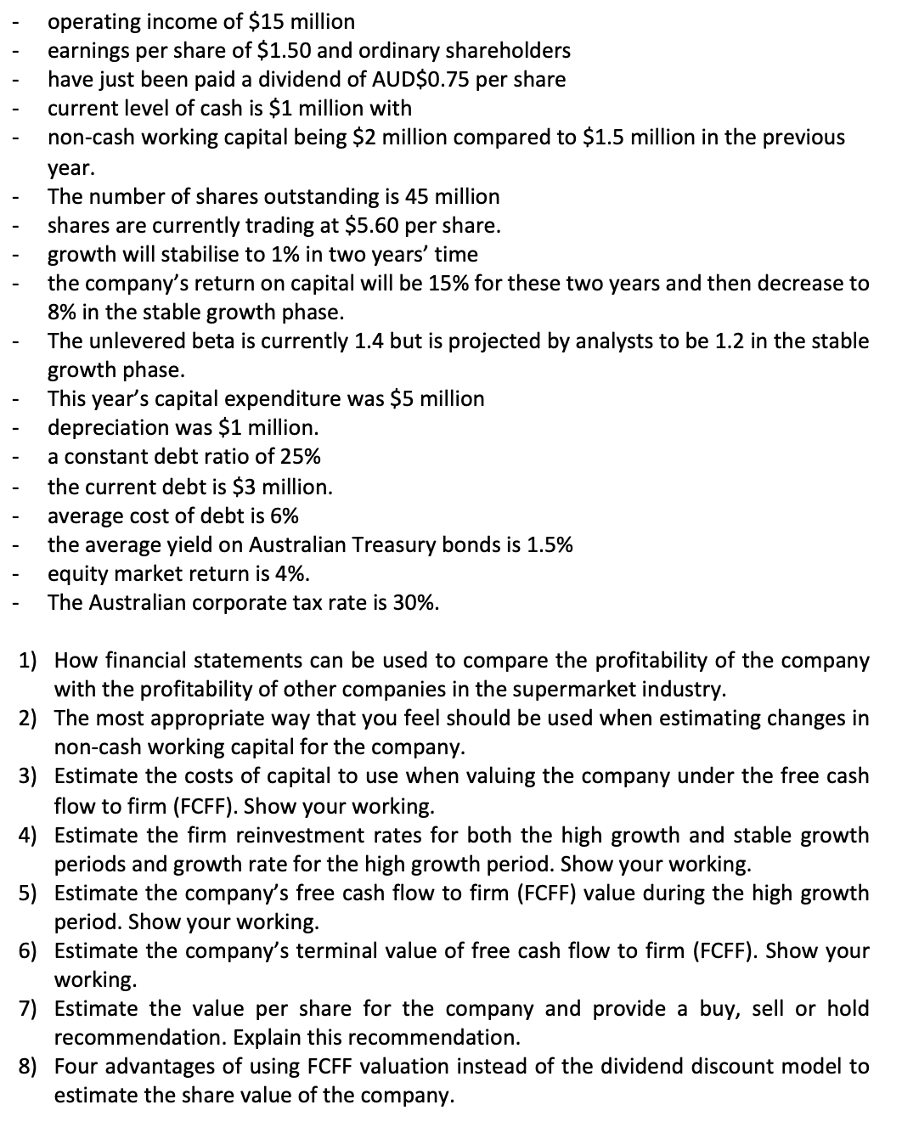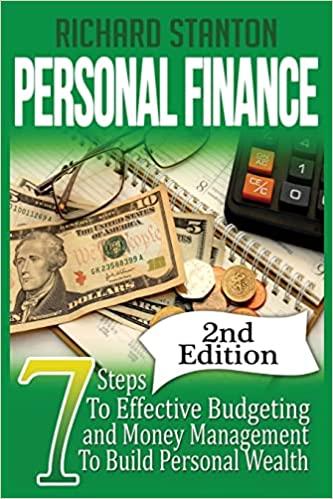
operating income of $15 million earnings per share of $1.50 and ordinary shareholders have just been paid a dividend of AUD$0.75 per share current level of cash is $1 million with non-cash working capital being $2 million compared to $1.5 million in the previous year. The number of shares outstanding is 45 million shares are currently trading at $5.60 per share. growth will stabilise to 1% in two years' time the company's return on capital will be 15% for these two years and then decrease to 8% in the stable growth phase. The unlevered beta is currently 1.4 but is projected by analysts to be 1.2 in the stable growth phase. This year's capital expenditure was $5 million depreciation was $1 million. a constant debt ratio of 25% the current debt is $3 million. average cost of debt is 6% the average yield on Australian Treasury bonds is 1.5% equity market return is 4%. The Australian corporate tax rate is 30%. 1) How financial statements can be used to compare the profitability of the company with the profitability of other companies in the supermarket industry. 2) The most appropriate way that you feel should be used when estimating changes in non-cash working capital for the company. 3) Estimate the costs of capital to use when valuing the company under the free cash flow to firm (FCFF). Show your working. 4) Estimate the firm reinvestment rates for both the high growth and stable growth periods and growth rate for the high growth period. Show your working. 5) Estimate the company's free cash flow to firm (FCFF) value during the high growth period. Show your working. 6) Estimate the company's terminal value of free cash flow to firm (FCFF). Show your working. 7) Estimate the value per share for the company and provide a buy, sell or hold recommendation. Explain this recommendation. 8) Four advantages of using FCFF valuation instead of the dividend discount model to estimate the share value of the company. operating income of $15 million earnings per share of $1.50 and ordinary shareholders have just been paid a dividend of AUD$0.75 per share current level of cash is $1 million with non-cash working capital being $2 million compared to $1.5 million in the previous year. The number of shares outstanding is 45 million shares are currently trading at $5.60 per share. growth will stabilise to 1% in two years' time the company's return on capital will be 15% for these two years and then decrease to 8% in the stable growth phase. The unlevered beta is currently 1.4 but is projected by analysts to be 1.2 in the stable growth phase. This year's capital expenditure was $5 million depreciation was $1 million. a constant debt ratio of 25% the current debt is $3 million. average cost of debt is 6% the average yield on Australian Treasury bonds is 1.5% equity market return is 4%. The Australian corporate tax rate is 30%. 1) How financial statements can be used to compare the profitability of the company with the profitability of other companies in the supermarket industry. 2) The most appropriate way that you feel should be used when estimating changes in non-cash working capital for the company. 3) Estimate the costs of capital to use when valuing the company under the free cash flow to firm (FCFF). Show your working. 4) Estimate the firm reinvestment rates for both the high growth and stable growth periods and growth rate for the high growth period. Show your working. 5) Estimate the company's free cash flow to firm (FCFF) value during the high growth period. Show your working. 6) Estimate the company's terminal value of free cash flow to firm (FCFF). Show your working. 7) Estimate the value per share for the company and provide a buy, sell or hold recommendation. Explain this recommendation. 8) Four advantages of using FCFF valuation instead of the dividend discount model to estimate the share value of the company







